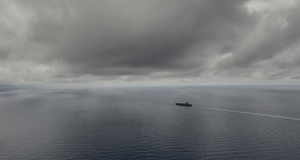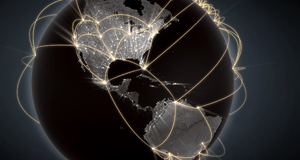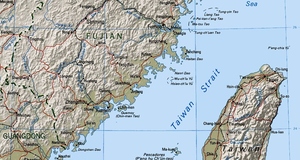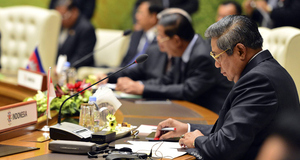Featured Article:Trade and Conflict in South Asia: Examining the Relationship Between Trade Interdependence and Militarized Conflict
By
2012, Vol. 4 No. 08 | pg. 5/5 | « Conclusions, Suggestions for Future Research, and Implications for Policy in South AsiaAs my findings show, the time-lag linear regressions with MID count as the independent variable and trade interdependence as the dependent variable approximate well for a majority of the case studies. This conclusion implies that the relationship between trade interdependence and occurrence of MIDs is negatively correlated in the opposite direction from what I had expected. Rather than trade interdependence leading to fewer conflicts, it is increased conflicts that lead to decreased trade interdependence. Even though my expected direction of relationship was incorrect, the findings are still consistent with a liberalist perspective of international relations theory as I had predicted. However, the results can also be explained by a realist perspective as well, depending on how one looks at the results: a conclusion I had not considered. The primary aspect of a liberalist standpoint with which my findings are consistent is the following: South Asian nations historically have not engaged in enough trade to be reliant on one another for goods, so it does not matter as much to them if they engage in conflicts. According to liberalists, trade interdependence maintains the “liberal peace” in the international realm. However, if two nations are not reliant on bilateral trade interdependence -- as is the case with most South Asian country pairs -- then it is understandable why they do not have any qualms about engaging in armed conflicts with each other.On the other hand, realists would argue that the condition of anarchy in the international realm leads to a security dilemma in which nations do not know what others are planning. As a result, every nation is on guard against one another and the slightest provocation could set off an armed conflict. This theory can also be supported by my results, since the condition of anarchy leads to South Asian nations not knowing what to expect from one another. Therefore, in a region that has a history of heightened tensions, even the slightest hint of aggression by one country may lead to conflict with another, which then leads to lower levels of trade between the two countries. While the results of this investigation contribute to the study of a region that is often overlooked in scholarly research, my findings are by no means comprehensive and final. Within the scope of my focus on trade interdependence and military conflicts, I have provided an in-depth analysis of the relationship between these two variables in South Asia. However, there are a number of other variables that may also be of interest in this subject, so for future research, it may prove to be beneficial to look at other variables that may have an effect on trade interdependence, MID occurrence, or both. In spite of the limited scope of this particular study, there is one primary implication for future policy that can be drawn from the results. My findings support the idea that in order to bolster peace and diminish conflicts in South Asia, there is a definite need for some sort of a trade agreement in the regions that makes engaging in armed conflict more costly than trading. Since states are assumed to be rational actors whose behavior is contingent on the benefits they may reap from a particular situation, a South Asian trade agreement will amplify the rewards of increasing trade within the region and magnify the losses of engaging in military conflicts that may diminish levels of trade. Rational state actors would most likely opt for the opportunity to enhance their economic position, so they would engage in fewer conflicts, which have the potential of decreasing their own profitability. ReferencesBarbieri, Katherine. (1996). Economic interdependence: a path to peace or a source of nterstate conflict?. Journal of Peace Research, 33(1), 29-49. Barbieri, Katherine, and Gerald Schneider. (1999). Globalization and peace: assessing new directions in the study of trade and conflict. Journal of Peace Research, 36(4), 387-404. BBC Staff. (2002). India-Pakistan: Troubled relations. British Broadcasting Company. Retrieved from news.bbc.co.uk. Bennett, D. Scott, and Allan Stam. (2002). EUGene: A conceptual manual. International Interactions, 26, 179-204. Blood, Peter R. Ed. (2001). Afghanistan: A country study. Washington: GPO for the Library of Congress. Copeland, Dale C. (1996). Economic interdependence and war: A theory of trade expectations. International Security, 20(4), 5-41. Ganguly, Sumit. (1989). The Sino-Indian border talks, 1981-1989: A view from New Delhi. Asian Survey 29(12), 1123-1135. Gartzke, Erik, and Quan Li. (2003). Measure for measure: Concept operationalization and the trade interdependence-conflict debate. Journal of Peace Research, 40(5), 553-71. Gelpi, Christopher F., and Joseph M. Grieco. (2008). Democracy, interdependence, and the sources of the liberal peace. Jou rnal of Peace Research, 45(1), 17-36. Goenner, Cullen F. (2010). From toys to warships: Interdependence and the effects of disaggregated trade on militarized disputes. Journal of Peace Research, 47(5), 547-59. Hegre, Håvard. (2004). Size asymmetry, trade, and militarized conflict." Journal of Conflict Resolution, 48(3), 403-29. Hegre, Håvard. (2009). Trade dependence or size dependence?. Conflict Management and Peace Science, 26(1), 26-45. Hegre, Håvard, John R Oneal, and Bruce Russett. (2010). Trade does promote peace: new simultaneous estimates of the reciprocal effects of trade and conflict. Journal of Peace Research, 47(6), 763-74. Heston, Alan, Robert Summers, and Bettina Aten. (2011). Penn world table version 7.0. Center for International Comparisons of Production, Income and Prices at the University of Pennsylvania. Holslag, Jonathan. (2009). The persistent military security dilemma between China and India. Journal of Strategic Studies, 32(6), 811-40. Maniruzzaman, Talukder. (1977). Bangladesh in 1976: Struggle for survival as an independent state. Asian Survey, 17(2), 191-200. Martin, Philippe, Thierry Mayer, and Mathias Thoenig. (2008). Make trade not war?. Review of Economic Studies, 75(3), 865-900. McMillan, Susan M. (1997). Interdependence and conflict. Mershon International Studies Review 41(1), 33-58. Morrow, James D. (1999). How could trade affect conflict?. Journal of Peace Research, 36(4), 481-89. Oneal, John R., Frances H. Oneal, Zeev Maoz, and Bruce Russett. (1996). The liberal peace: Interdependence, democracy, and international conflict, 1950-85. Journal of Peace Research, 33(1), 11-28. Oneal, John R., and Bruce Russett. (1999). Assessing the liberal peace with alternative specifications: trade still reduces conflict. Journal of Peace Research, 36(4), 423-42. Polachek, Solomon W., John Robst, and Yuan-Ching Chang. (1999). Liberalism and interdependence: Extending the trade-conflict model. Journal of Peace Research, 36(4), 405-22. Polachek, Solomon William. (1980). Conflict and trade. Journal of Conflict Resolution, 24(1), 55-78. Raman, B. (2010). India-Pakistan: To talk or not to talk? South Asia Analysis Group (SAAG), 3669. Robst, John, Solomon Polachek, and Yuan-Ching Chang. (2007). Geographic proximity, trade, and international conflict/cooperation. Conflict Management and Peace Science, 24(1), 1-24. Singh, Swaran. (1998). Three agreements and five principles between India and China. In Across the Himalayan Gap. New Delhi: Gyan Publishing House. Sridharan, E. (2005). Improving Indo-Pakistan relations: International relations theory, nuclear deterrence and possibilities for economic cooperation. Contemporary South Asia, 14(3), 321-39. Waltz, Kenneth. (1979). Theory of International Politics. New York: Random House. Washington Post Staff. (1998). History of India-Pakistan conflict. Washington Post. Retrieved from www.washingtonpost.com. Suggested Reading from Inquiries Journal
Inquiries Journal provides undergraduate and graduate students around the world a platform for the wide dissemination of academic work over a range of core disciplines. Representing the work of students from hundreds of institutions around the globe, Inquiries Journal's large database of academic articles is completely free. Learn more | Blog | Submit Latest in International Affairs |


















